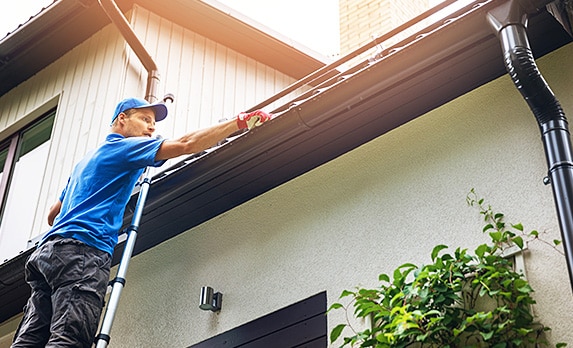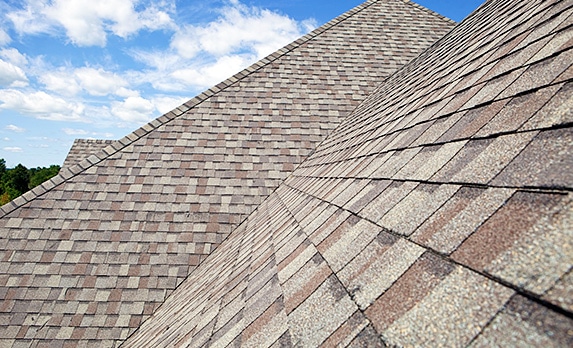Understanding Your Roof System
Are you a homeowner who is under the impression that a new roof is simply the replacement of old shingles with new ones? If so, you’re certainly not alone, but unfortunately incorrect. Your roof is a system, and an important part of your home. Here, we’ll take you through a few of the most essential components of your roofing system that work together to protect your home from the harsh elements of the outdoors.
Roof Deck and Roof Rafters

As a matter of fact, many shingle blow-offs and roof failures are due to an inadequate deck – not poor quality shingles.
Let’s breakdown the wood part of your roof’s foundation:
Roof Truss – The beam framework that supports your roof, often called the roof skeleton.
Rafters – The actual beams that run from the top to the bottom of the roof.
Deck – Panels that cover the rafters. The rest of the roofing materials are attached to these panels (i.e. metal panels, shingles, etc.)
Saddle/Cricket – Wood flashing typically used with counter, apron and step flashings on roofs with steep slopes.
Sub-Roof / Underlayment
The underlayment is located on top of the roof deck and underneath the shingles. Its purpose is to prevent water backup beneath the shingles, protect the underlying wood from rotting and to stop damage caused by ice damming and windy rains. Typically made of a breathable, synthetic material, your sub-roof provides an additional layer of protection against moisture buildup.
Contrary to what you may think, shingles are not waterproof but they are specifically designed to make water roll off your roof. After many cycles of freezing and thawing through the seasons, excess ice and water can cause damage to the roof deck along the eavestroughs, and this underlayment prevents against such damage.
Ventilation
Did you know that improper or lack of ventilation is one of the leading causes of premature roof failure? Correct ventilation systems have an equal balance of intake and exhaust. The intake is located in the overhang and the exhaust in the roof. The benefits of proper ventilation include reduced energy costs, removal of moisture, prevention of rotting wood, and protection against damaged insulation and other materials in the overall structure of your roof.
Eavestroughs and Overhang

Eavestrough (also called a gutter) – A channel that collects and removes rainwater from the roof.
Fascia – A type of trim used to cover the eaves at the rafter end.
Downpipe – Carries water from a roof’s drainage units down to ground level.
Soffit – An area where air is able to go through the roof vents and into the attic through a location under the eaves.
Terminations and Flashings

Different types of flashings include:
Valley – Where two sloping angles of a roof meet, forming a valley.
Step – Around roof projections such as walls, dormers, curbs, and chimneys, and are installed between each stage of the roofing process.
Roof Edge / Drip Edge – Located at the edge of the roof, protecting the fascia, preventing against wood rotting and rodent entry.
Stack – Made to wrap around a pipe stack or roof curb.
Counter – Used to protect from weather exposure and also the top edge of base or step flashings on walls, curbs and other surfaces.
Wall – Typically used along the front side of a dormer wall for the same purposes as a counter flashing as described above.
Shingles

Shingle components include:
Starter Shingle (Starter Strip) – Seals and secures the first phase of the roof’s visible shingles around the edges. It is a pre-cut shingle installed at the eaves and rake edge.
Ridge – A type of shingle that extends the length of the entire roof, at the highest point. (Supplied by most quality shingle manufacturers)
Hip – A type of shingle that forms an angle where two sloping parts of a roof meet together. (Supplied by most quality shingle manufacturers)
Have additional questions about your roofing system? Contact Integrity Roofers today.



















